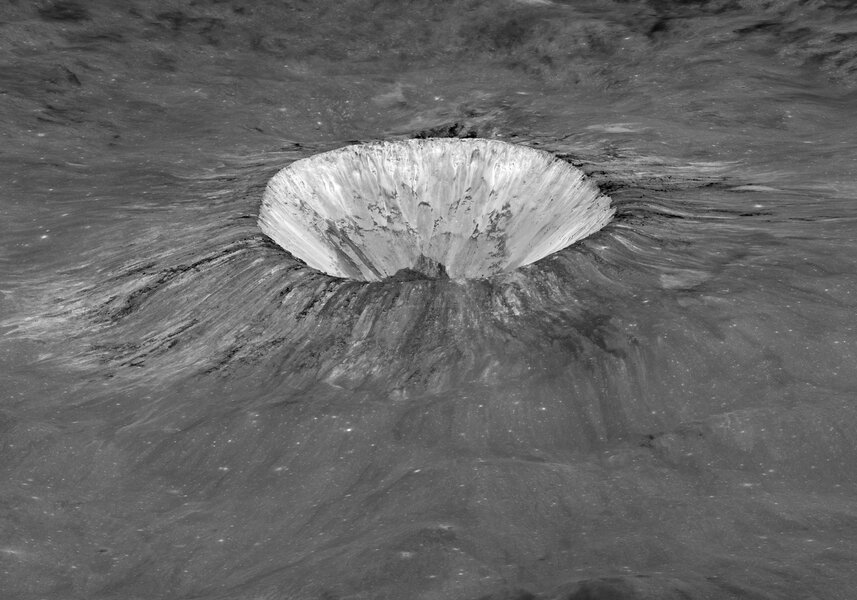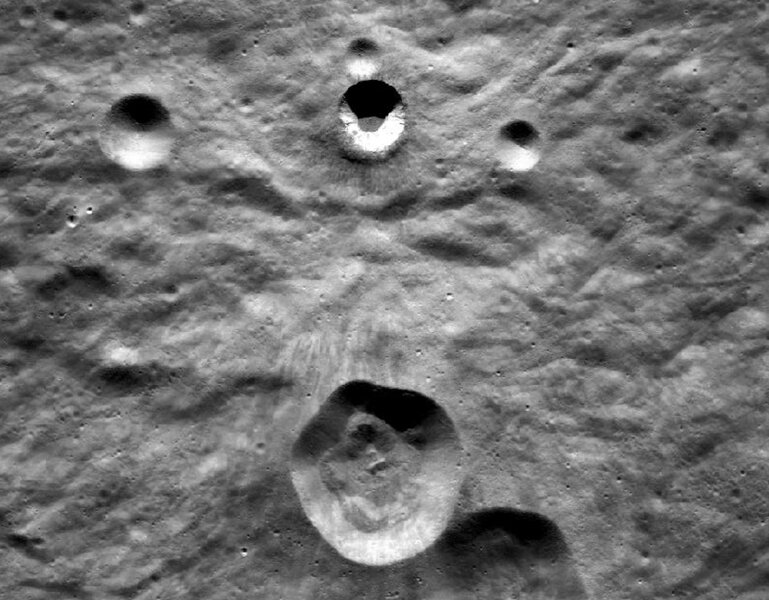Create a free profile to get unlimited access to exclusive videos, sweepstakes, and more!
A spectacular crater glows on the Moon's far side

My heavens, our Moon is beautiful.
I knew this before, but when the Lunar Reconnaissance Orbiter slipped into the Moon's grasp back in 2009, this fact was literally delivered home. The images LRO has sent back to Earth have been stunning, one after another.
What amazes me is that even after more than eight years it can still drop down an image that stops me in my tracks. Check out this luscious shot of the crater Pierazzo, a 9-kilometer wide impact site just on the Moon's far side:
I know, right? Wow. I love this shot; the crater seems to glow. That's mostly a contrast effect; the angle of sunlight and the exposure have a lot to do with that.
But it's also real in a way. The interior of the crater is very reflective, indicating youth. Over time sunlight and micrometeorite impacts tend to dull the surface, darkening it. So the interior really is pretty bright compared to the surrounding area.
Another indicator of youth is that this crater has rays, radially aligned streamers of material around it like spokes on a wheel. This comes from the impact itself, as plumes of ejected debris fall back to the surface. Pierazzo's rays extend for a hundred kilometers, a decent distance. Rays tend to fade over time, so again this is an indicator that we're seeing a relatively young feature. Of course, by young I mean maybe a few hundred million years old. The Moon's highlands (the rugged terrain to the south, for example) is far older, measuring its age in billions of years.
The crater has an interesting ejecta blanket, too; this is material that flew out of the crater and fell all around it. A paper examining this material determined that it's impact melt, literally rock melted from the intense energy and heat delivered into the lunar surface by the asteroid or comet that hit it. This molten material blasts out of the crater and can flow along the surface, rolling over hills and blanketing them. In the paper they examine how that material flowed away and mixed with the rocks in the local terrain.
That may not sound like a big deal, but understanding the layering and mixing of the lunar surface helps scientists understand the features seen there. And hey, someday your grandchildren may be living on the Moon, and I bet they'll be very interested indeed in the environment around them. Not understanding can mean the difference between life and death on a place as forbidding and unforgiving as our Moon.
The images above highlight the crater itself, but here's the full LRO image, which gives you some context:
Note the bigger crater at the bottom (called Lents C); even though the Sun is hitting the slope at the same angle it's much darker, indicating it's an older crater.
In fact, sunlight angle makes a big difference in what you see. That LRO image was taken obliquely; the spacecraft was far to the side of the crater and was rotated by about 65° to catch it (the Moon's curvature adds another 10° of slope to it as well). Here's a much wider-angle mosaic from LRO taken when the spacecraft was directly above the ground it was imaging:
You can see Pierazzo — note the debris pile in the center, from material that has fallen from the rim onto the crater floor; you can just see the top of that mound in the oblique LRO image — and the bigger crater Lents C below it — again, note the rays from Pierazzo extend past Lents C. But see the smaller crater just above Pierazzo? It appears bright here, but in the oblique LRO shot you can barely make it out! The way the lunar surface reflects sunlight depends strongly on the angles, and the contrast can change hugely. Mapping the Moon means taking images at different times of the lunar day to make sure you're seeing everything the Moon has to offer.
Not-so-incidentally, the crater is named after the planetary scientist Betsy Pierazzo, who studied impact modeling, and who was also a devoted educator and science communicator. It's fitting that she have a crater named for her, especially one so interesting. If someone does eventually wander over the Moon's rugged ground around this crater, marveling at what they see, I hope they take a moment to look up after whom it's named. That crater will be around for a long, long time, and it's nice to know that humans give each other a sense of immortality, and of history, in this way.





























